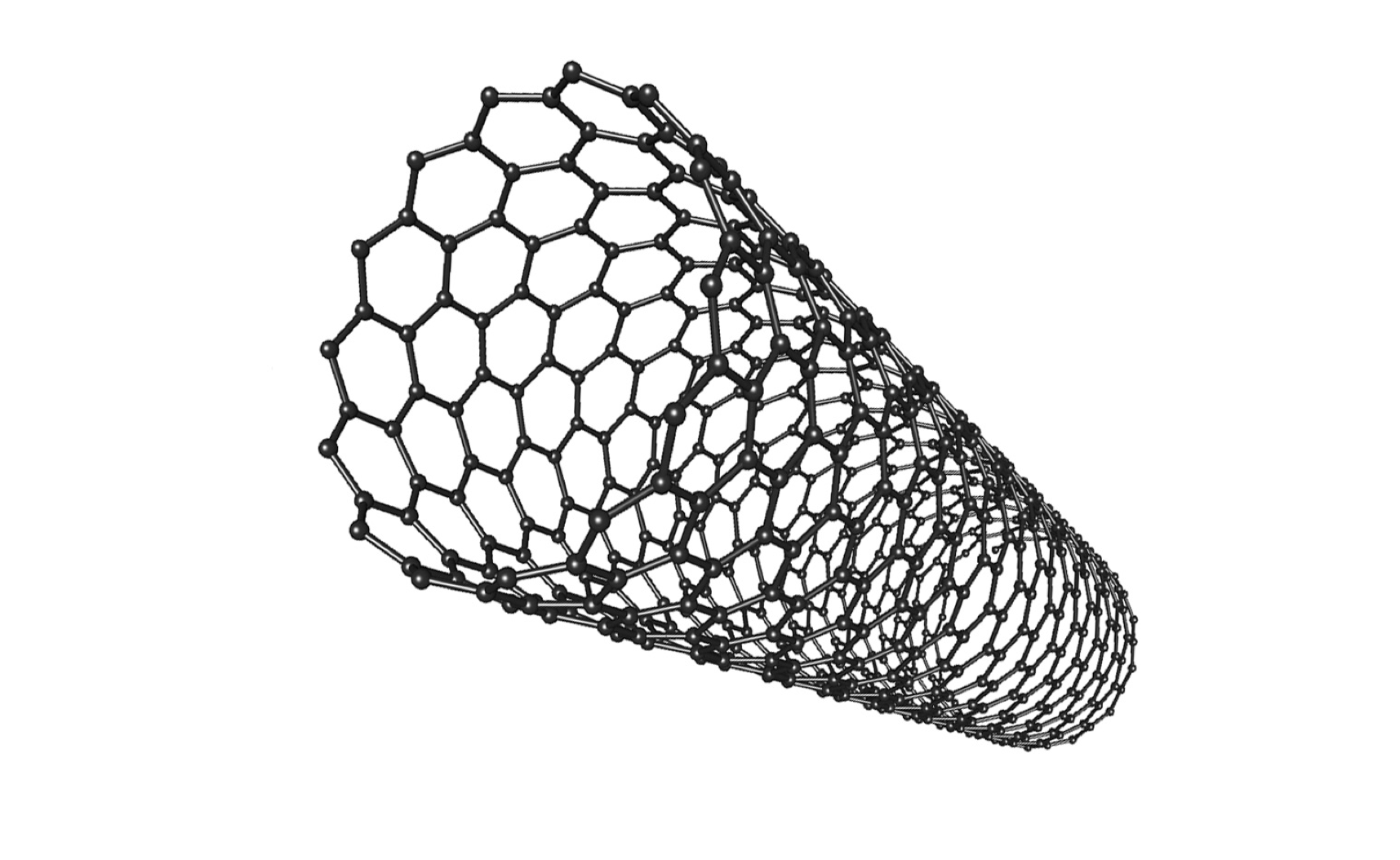Silylation of Single-Walled Carbon Nanotubes
A non-destructive method to prepare semiconducting, silylated, single-walled carbon nanotubes
Single walled carbon nanotubes (SWNTs) possess unique structural, electronic, mechanical, and optical properties. The combination of the helicity and diameter of SWNTs, defined by the roll-up vector, that is, tube chirality, determines whether a tube is a metal or a semiconductor. One main motivation of understanding the electronic structure of carbon nanotubes is that as spatially constrained one-dimensional structures, they are the smallest dimensional systems that can be used for the effective transport of electrons and optical excitations and, hence, are expected to be particularly important in the construction and integration of nanoscale devices. The majority of electronics applications specifically require the isolation of semiconducting tubes. However, the lack of control over the electronic properties of as-prepared nanotubes, e.g. the inability to reliably separate masses of semiconducting from metallic tubes, has created an urgent need to obtain electronic monodispersity in nanotube samples. One solution to this problem involves the controllable use of covalent chemistry to modify the surfaces of tubes so as to enhance the relative populations of either metallic or semiconducting tubes. A particularly interesting means of altering the relative distribution of metallic vs. semiconducting carbon nanotubes, which the researchers have begun to explore, involves the chemical derivatization of nanotubes with a high k dielectric coating material, such as Si-containing species.
Silylation of raw, pristine SWNTs has been achieved through a novel process developed by researchers at Stony Brook University. The silylation reaction is neither spatially limited to defect sites and ends nor does it require harsh oxidative methods. Commercially available CoMoCAT SWNTs were able to be sidewall-functionalized with (a) trimethoxysilane and (b) with hexaphenyldisilane. Moreover, it was noted, upon silylation, that the solubility and stability of the SWNTs increased dramatically in DMF as compared with pristine, unfunctionalized CoMoCat nanotubes. Functionalization enables the fabrication of insulator-coated SWNTs which can find use as the building blocks in nanotube devices such as FETs (field effect transistors) relevant for functional device applications. This process can also produce dielectric material overlays that are placed onto SWNT ends and sidewalls through a well-defined relatively mild molecular reaction which is structurally non-destructive to the nanotube itself and preserves the electronic character of the tubes.
 Please note, header image is purely illustrative. Source: AJC1, Flickr, CC BY-SA 2.0.
Please note, header image is purely illustrative. Source: AJC1, Flickr, CC BY-SA 2.0.
The silylation reaction is nondestructive, selects preferentially for smaller-diameter tubes, does not require the use of harsh oxidative methods, and solubilizes tubes in a variety of useful solvents.
Integrated nanoscale devices
Available for licensing.
Licensing
Patent Information:
| App Type |
Country |
Serial No. |
Patent No. |
Patent Status |
File Date |
Issued Date |
Expire Date |
|